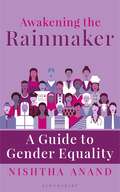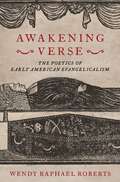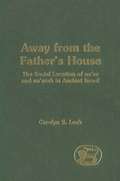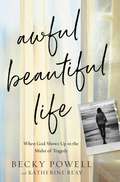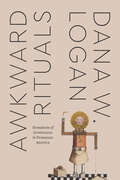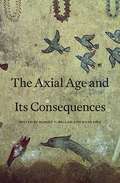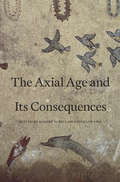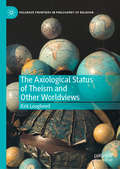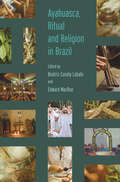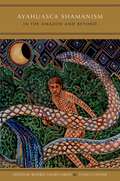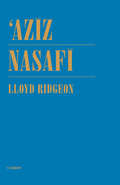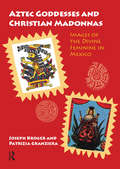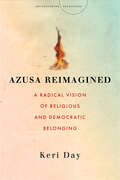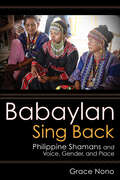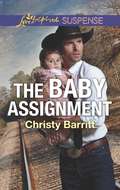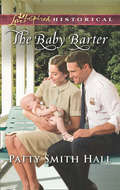- Table View
- List View
Awakening the Rainmaker: A Guide to Gender Equality
by Nishtha AnandAs per the Global Gender Gap Report 2021, it will take 267.6 years to close the gender gap in economic participation and opportunity.In 2021, India slipped 28 places and ranked 140th among 156 nations in The Global Gender Gap Index. Our female labour force participation rate stands distressingly low at 22.3 per cent.Only 31 per centof women occupy the Chief Human Resources Officer's role in India, a role which is over-represented by women in other countries, such as the US and South Africa.Less than 3 per cent of Chief Executive Officers in India are women.Like many women in the middle of their career, author Nishtha Anand too was overwhelmed when she first became pregnant with her child-would she also fall off her career trajectory like countless others? She hoped to nudge women, their families and organisations with practical hacks for awakening the rainmaker in them and those around them. Thus was born Awakening the Rainmaker that will motivate women to pursue their dreams and ambitions-with free choices and no guilt. Nishtha captures the gaps and potential solutions across the life cycle of a woman. She includes her learnings and interactions with women from different fields-some of India's most powerful women in business, CEOs, entrepreneurs, award-winning scientists, leading sports personalities and digital influencers. These women had their own mountains to conquer which they did with determination, planning and the right support. Further, she focuses on requisites for upbringing, demeanour and corporate policies and defines a framework for organisations to ensure a gender-neutral ecosystem.Awakening the Rainmaker will inspire during the crossroads of life and lead the way for women to pursue their ambitions.
Awakening Verse: The Poetics of Early American Evangelicalism
by Wendy Raphael RobertsIn 1740, Benjamin Franklin published the first American edition of Gospel Sonnets, by the eminent Scottish Presbyterian minister Ralph Erskine. The work, already in its fifth British edition, quickly became an American bestseller and remained so throughout the eighteenth century. Franklin was aware of what most scholars of American religion and literature have forgotten -that poetry played a central role in the "surprising works of God" that birthed evangelicalism. The far-reaching social transformations precipitated by the transatlantic evangelical revivals of the eighteenth century depended upon the development of a major literary form, that of revival poetry. Literary scholars and historians of religion have prioritized sermons, conversion narratives, periodicals, and hymnody. Wendy Roberts here argues that poetry offered a unique capacity to "diffuse celestial Fervor through the World," in the words of the cleric Samuel Davies. Awakening Verse is the first monograph to address this large corpus of evangelical poetry in the American colonies, shedding light on important dimensions of eighteenth-century religious and literary culture. Roberts deftly assembles a large, previously unknown archive of immensely popular poems, examines how literary history has rendered this poetic tradition invisible, and demonstrates how a vibrant popular poetics exercised a substantial effect on the landscape of early American religion, literature, and culture.
Awakening Verse: The Poetics of Early American Evangelicalism
by Wendy Raphael RobertsIn 1740, Benjamin Franklin published the first American edition of Gospel Sonnets, by the eminent Scottish Presbyterian minister Ralph Erskine. The work, already in its fifth British edition, quickly became an American bestseller and remained so throughout the eighteenth century. Franklin was aware of what most scholars of American religion and literature have forgotten -that poetry played a central role in the "surprising works of God" that birthed evangelicalism. The far-reaching social transformations precipitated by the transatlantic evangelical revivals of the eighteenth century depended upon the development of a major literary form, that of revival poetry. Literary scholars and historians of religion have prioritized sermons, conversion narratives, periodicals, and hymnody. Wendy Roberts here argues that poetry offered a unique capacity to "diffuse celestial Fervor through the World," in the words of the cleric Samuel Davies. Awakening Verse is the first monograph to address this large corpus of evangelical poetry in the American colonies, shedding light on important dimensions of eighteenth-century religious and literary culture. Roberts deftly assembles a large, previously unknown archive of immensely popular poems, examines how literary history has rendered this poetic tradition invisible, and demonstrates how a vibrant popular poetics exercised a substantial effect on the landscape of early American religion, literature, and culture.
Away from the Father's House: The Social Location of the Na'ar and Na'arah in Ancient Israel (The Library of Hebrew Bible/Old Testament Studies)
by Carolyn S. LeebBuilding on the biblical narrative and on social world analysis, Leeb argues that the terms NA'AR and NA'ARAH refer to persons displaced from the father's house (BET 'AB), usually as a result of debt slavery. Hence, rather than working his father's land, and becoming in turn the head of his own household, the NA'AR, as a domestic or military servant, helps build the household of another. Less frequently, the weakness or absence of the father leads to the same, or a similar, predicament. Any woman venturing from her own household is also likely to acquire the status of a NA'ARAH. This is a novel and challenging study in ancient Israelite social structure.
Awful Beautiful Life: When God Shows Up in the Midst of Tragedy
by Becky Powell Katherine ReayA gripping story of grace, faith, and triumph for a woman whose world shattered hours after her husband's suicide. Becky Powell faced the unthinkable on May 16, 2013. Her husband Mark called and said, "I've done something terrible." Within hours, she learned that he had taken his own life and, over a period of several years, millions of dollars from friends and colleagues. Everything she believed to be true, the very fiber of her marriage, was called into question. Within a week, rather than planning carpool runs and volunteer fundraisers, she owed almost one hundred creditors millions of dollars and had her own team of ten lawyers. She was also the subject of open FBI, SEC and DOJ investigations--and faced potential criminal charges. And, although she instantly denounced every cent of Mark's $15M in life insurance and promised to repay every penny taken, her lawyers knew that in reality she faced years of court battles and lawsuits, and possible jail time. Yet from that first horrific moment, God was there. He showed up in His Word, in Becky's friends, in her lawyers and in the generosity of those around her. He worked miracles. CNBC, the Wall Street Journal, Forbes, and others covered the first moment, but what about the last? What about the story in which God gives your next breath because you can't find it on your own? What about the story of a mom and three kids trying to make sense of their pasts, present and future while living under a microscope? Awful Beautiful Life is Becky's journey through the two years surrounding Mark's death and how she overcame. It came down to a loving God who surrounded her, a present and dedicated family, and friends, who made her life, offered her sanctuary and showed up for her and her kids in tangible ways. This is a story of remarkable grit, strength, and what the Body of Christ in action looks like.
Awful Beautiful Life: When God Shows Up in the Midst of Tragedy
by Becky Powell Katherine ReayA gripping story of grace, faith, and triumph for a woman whose world shattered hours after her husband's suicide. Becky Powell faced the unthinkable on May 16, 2013. Her husband Mark called and said, "I've done something terrible." Within hours, she learned that he had taken his own life and, over a period of several years, millions of dollars from friends and colleagues. Everything she believed to be true, the very fiber of her marriage, was called into question. Within a week, rather than planning carpool runs and volunteer fundraisers, she owed almost one hundred creditors millions of dollars and had her own team of ten lawyers. She was also the subject of open FBI, SEC and DOJ investigations--and faced potential criminal charges. And, although she instantly denounced every cent of Mark's $15M in life insurance and promised to repay every penny taken, her lawyers knew that in reality she faced years of court battles and lawsuits, and possible jail time. Yet from that first horrific moment, God was there. He showed up in His Word, in Becky's friends, in her lawyers and in the generosity of those around her. He worked miracles. CNBC, the Wall Street Journal, Forbes, and others covered the first moment, but what about the last? What about the story in which God gives your next breath because you can't find it on your own? What about the story of a mom and three kids trying to make sense of their pasts, present and future while living under a microscope? Awful Beautiful Life is Becky's journey through the two years surrounding Mark's death and how she overcame. It came down to a loving God who surrounded her, a present and dedicated family, and friends, who made her life, offered her sanctuary and showed up for her and her kids in tangible ways. This is a story of remarkable grit, strength, and what the Body of Christ in action looks like.
Awhad al-Dīn Kirmānī and the Controversy of the Sufi Gaze (Routledge Sufi Series)
by Lloyd RidgeonAwḥad al-Dīn Kirmānī (d. 1238) was one of the greatest and most colourful Persian Sufis of the medieval period; he was celebrated in his own lifetime by a large number of like-minded followers and other Sufi masters. And yet his form of Sufism was the subject of much discussion within the Islamic world, as it elicited responses ranging from praise and commendation to reproach and contempt for his Sufi practices within a generation of his death. This book assesses the few comments written about Kirmānī by his contemporaries, and also provides a translation from his Persian hagiography, which was written in the generation after his death. The controversy centres on Kirmānī’s penchant for gazing at, and dancing with, beautiful young boys. This anonymous hagiography presents a series of anecdotes that portray Kirmānī’s “virtues”. The book provides an investigation into Kirmānī the individual, but the story has significance that extends much further. The controversy of his form of Sufism occurred at a crucial time in the evolution of Sufi piety and theology. The research herein situates Kirmānī within this critical period, and assesses the various perspectives taken by his contemporaries and near contemporaries. Such views reveal much about the dynamics and developments of Sufism during the thirteenth and fourteenth centuries, when the Sufi orders (ṭurūq, s. ṭarīqa) began to emerge, and which gave individual Sufis a much more structured and ordered method of engaging in piety, and of presenting the Sufi tradition to society at large. As the first attempt in a Western language to appreciate the significant contribution that Kirmānī made to the medieval Persian Sufi tradition, this book will appeal to students and scholars of Sufi Studies, as well as those interested in Middle Eastern History.
Awhad al-Dīn Kirmānī and the Controversy of the Sufi Gaze (Routledge Sufi Series)
by Lloyd RidgeonAwḥad al-Dīn Kirmānī (d. 1238) was one of the greatest and most colourful Persian Sufis of the medieval period; he was celebrated in his own lifetime by a large number of like-minded followers and other Sufi masters. And yet his form of Sufism was the subject of much discussion within the Islamic world, as it elicited responses ranging from praise and commendation to reproach and contempt for his Sufi practices within a generation of his death. This book assesses the few comments written about Kirmānī by his contemporaries, and also provides a translation from his Persian hagiography, which was written in the generation after his death. The controversy centres on Kirmānī’s penchant for gazing at, and dancing with, beautiful young boys. This anonymous hagiography presents a series of anecdotes that portray Kirmānī’s “virtues”. The book provides an investigation into Kirmānī the individual, but the story has significance that extends much further. The controversy of his form of Sufism occurred at a crucial time in the evolution of Sufi piety and theology. The research herein situates Kirmānī within this critical period, and assesses the various perspectives taken by his contemporaries and near contemporaries. Such views reveal much about the dynamics and developments of Sufism during the thirteenth and fourteenth centuries, when the Sufi orders (ṭurūq, s. ṭarīqa) began to emerge, and which gave individual Sufis a much more structured and ordered method of engaging in piety, and of presenting the Sufi tradition to society at large. As the first attempt in a Western language to appreciate the significant contribution that Kirmānī made to the medieval Persian Sufi tradition, this book will appeal to students and scholars of Sufi Studies, as well as those interested in Middle Eastern History.
Awkward Rituals: Sensations of Governance in Protestant America (Class 200: New Studies in Religion)
by Dana W. LoganA fresh account of early American religious history that argues for a new understanding of ritual. In the years between the American Revolution and the Civil War, there was an awkward persistence of sovereign rituals, vestiges of a monarchical past that were not easy to shed. In Awkward Rituals, Dana Logan focuses our attention on these performances, revealing the ways in which governance in the early republic was characterized by white Protestants reenacting the hierarchical authority of a seemingly rejected king. With her unique focus on embodied action, rather than the more common focus on discourse or law, Logan makes an original contribution to debates about the relative completeness of America’s Revolution. Awkward Rituals theorizes an under-examined form of action: rituals that do not feel natural even if they sometimes feel good. This account challenges common notions of ritual as a force that binds society and synthesizes the self. Ranging from Freemason initiations to evangelical societies to missionaries posing as sailors, Logan shows how white Protestants promoted a class-based society while simultaneously trumpeting egalitarianism. She thus redescribes ritual as a box to check, a chore to complete, an embarrassing display of theatrical verve. In Awkward Rituals, Logan emphasizes how ritual distinctively captures what does not change through revolution.
Awkward Rituals: Sensations of Governance in Protestant America (Class 200: New Studies in Religion)
by Dana W. LoganA fresh account of early American religious history that argues for a new understanding of ritual. In the years between the American Revolution and the Civil War, there was an awkward persistence of sovereign rituals, vestiges of a monarchical past that were not easy to shed. In Awkward Rituals, Dana Logan focuses our attention on these performances, revealing the ways in which governance in the early republic was characterized by white Protestants reenacting the hierarchical authority of a seemingly rejected king. With her unique focus on embodied action, rather than the more common focus on discourse or law, Logan makes an original contribution to debates about the relative completeness of America’s Revolution. Awkward Rituals theorizes an under-examined form of action: rituals that do not feel natural even if they sometimes feel good. This account challenges common notions of ritual as a force that binds society and synthesizes the self. Ranging from Freemason initiations to evangelical societies to missionaries posing as sailors, Logan shows how white Protestants promoted a class-based society while simultaneously trumpeting egalitarianism. She thus redescribes ritual as a box to check, a chore to complete, an embarrassing display of theatrical verve. In Awkward Rituals, Logan emphasizes how ritual distinctively captures what does not change through revolution.
The Axial Age and Its Consequences
by Robert N. Bellah Hans JoasThis book makes the bold claim that intellectual sophistication was born worldwide during the middle centuries of the first millennium bce. From Axial Age thinkers we inherited a sense of the world as a place not just to experience but to investigate, envision, and alter. A variety of utopian visions emerged and led to both reform and repression.
The Axial Age and Its Consequences
by Robert N. Bellah Hans JoasThis book makes the bold claim that intellectual sophistication was born worldwide during the middle centuries of the first millennium bce. From Axial Age thinkers we inherited a sense of the world as a place not just to experience but to investigate, envision, and alter. A variety of utopian visions emerged and led to both reform and repression.
The Axiological Status of Theism and Other Worldviews (Palgrave Frontiers in Philosophy of Religion)
by Kirk LougheedThis book explores the value impact that theist and other worldviews have on our world and its inhabitants. Providing an extended defense of anti-theism - the view that God’s existence would (or does) actually make the world worse in certain respects - Lougheed explores God’s impact on a broad range of concepts including privacy, understanding, dignity, and sacrifice. The second half of the book is dedicated to the expansion of the current debate beyond monotheism and naturalism, providing an analysis of the axiological status of other worldviews such as pantheism, ultimism, and Buddhism. A lucid exploration of contemporary and relevant questions about the value impact of God’s existence, this book is an invaluable resource for scholars interested in axiological questions in the philosophy of religion.
Ayahuasca, Ritual and Religion in Brazil
by Beatriz Caiuby Labate Edward MacRaeAyahuasca is a psychoactive drink used for healing and divination among religious groups in the Brazilian Amazon. 'Ayahuasca, Ritual and Religion in Brazil' is the first scholarly volume in English to examine the religious rituals and practices surrounding ayahuasca. The use of ayahuasca among religious groups is analysed, alongside Brazilian public policies regarding ayahuasca and the handling of substance dependence. 'Ayahuasca, Ritual and Religion in Brazil' will be of interest to scholars of anthropology and religion and all those interested in the role of stimulants in religious practice.
Ayahuasca, Ritual and Religion in Brazil
by Beatriz Caiuby Labate Edward MacRaeAyahuasca is a psychoactive drink used for healing and divination among religious groups in the Brazilian Amazon. 'Ayahuasca, Ritual and Religion in Brazil' is the first scholarly volume in English to examine the religious rituals and practices surrounding ayahuasca. The use of ayahuasca among religious groups is analysed, alongside Brazilian public policies regarding ayahuasca and the handling of substance dependence. 'Ayahuasca, Ritual and Religion in Brazil' will be of interest to scholars of anthropology and religion and all those interested in the role of stimulants in religious practice.
Ayahuasca Shamanism in the Amazon and Beyond (Oxford Ritual Studies)
Beatriz Caiuby Labate and Clancy Cavnar offer an in-depth exploration of how Amerindian epistemology and ontology concerning indigenous shamanic rituals of the Amazon have spread to Western societies, and of how indigenous, mestizo, and cosmopolitan cultures have engaged with and transformed these forest traditions. The volume focuses on the use of ayahuasca, a psychoactive drink essential in many indigenous shamanic rituals of the Amazon. Ayahuasca use has spread to countries far beyond its Amazonian origin, spurring a wide variety of legal and cultural responses. The essays in this volume look at how these responses have influenced ritual design and performance in traditional and non-traditional contexts, how displaced indigenous people and rubber tappers are engaged in the creative reinvention of rituals, and how these rituals help build ethnic alliances and cultural and political strategies. These essays explore important classic and contemporary issues in anthropology, including the relationship between the expansion of ecotourism and ethnic tourism and recent indigenous cultural revival and the emergence of new ethnic identities. The volume also examines trends in the commodification of indigenous cultures in post-colonial contexts, the combination of shamanism with a network of health and spiritually related services, and identity hybridization in global societies. The rich ethnographies and extensive analysis of these essays will allow deeper understanding of the role of ritual in mediating the encounter between indigenous traditions and modern societies.
Aziz Nasafi
by Lloyd RidgeonShows Nasafi and his legacy in a new light. Nasafi's works are of particular interest because they contain valuable descriptions of the different Islamic world views of the age. Includes substantial extracts to help illuminate this perceptive study of a neglected figure in the pantheon of Sufi thinkers.
Aziz Nasafi
by Lloyd RidgeonShows Nasafi and his legacy in a new light. Nasafi's works are of particular interest because they contain valuable descriptions of the different Islamic world views of the age. Includes substantial extracts to help illuminate this perceptive study of a neglected figure in the pantheon of Sufi thinkers.
Aztec Goddesses and Christian Madonnas: Images of the Divine Feminine in Mexico
by Joseph Kroger Patrizia GranzieraThe face of the divine feminine can be found everywhere in Mexico. One of the most striking features of Mexican religious life is the prevalence of images of the Virgin Mother of God. This is partly because the divine feminine played such a prominent role in pre-Hispanic Mexican religion. Goddess images were central to the devotional life of the Aztecs, especially peasants and those living in villages outside the central city of Tenochtitlan (present day Mexico City). In these rural communities fertility and fecundity, more than war rituals and sacrificial tribute, were the main focus of cultic activity. Both Aztec goddesses and the Christian Madonnas who replaced them were associated, and sometimes identified, with nature and the environment: the earth, water, trees and other sources of creativity and vitality. This book uncovers the myths and images of 22 Aztec Goddesses and 28 Christian Madonnas of Mexico. Their rich and symbolic meaning is revealed by placing them in the context of the religious worldviews in which they appear and by situating them within the devotional life of the faithful for whom they function as powerful mediators of divine grace and terror.
Aztec Goddesses and Christian Madonnas: Images of the Divine Feminine in Mexico
by Joseph Kroger Patrizia GranzieraThe face of the divine feminine can be found everywhere in Mexico. One of the most striking features of Mexican religious life is the prevalence of images of the Virgin Mother of God. This is partly because the divine feminine played such a prominent role in pre-Hispanic Mexican religion. Goddess images were central to the devotional life of the Aztecs, especially peasants and those living in villages outside the central city of Tenochtitlan (present day Mexico City). In these rural communities fertility and fecundity, more than war rituals and sacrificial tribute, were the main focus of cultic activity. Both Aztec goddesses and the Christian Madonnas who replaced them were associated, and sometimes identified, with nature and the environment: the earth, water, trees and other sources of creativity and vitality. This book uncovers the myths and images of 22 Aztec Goddesses and 28 Christian Madonnas of Mexico. Their rich and symbolic meaning is revealed by placing them in the context of the religious worldviews in which they appear and by situating them within the devotional life of the faithful for whom they function as powerful mediators of divine grace and terror.
Azusa Reimagined: A Radical Vision of Religious and Democratic Belonging (Encountering Traditions)
by Keri DayIn Azusa Reimagined, Keri Day explores how the Azusa Street Revival of 1906, out of which U.S. Pentecostalism emerged, directly critiqued America's distorted capitalist values and practices at the start of the twentieth century. Employing historical research, theological analysis, and critical theory, Day demonstrates that Azusa's religious rituals and traditions rejected the racial norms and profit-driven practices that many white Christian communities gladly embraced. Through its sermons and social practices, the Azusa community critiqued racialized conceptions of citizenship that guided early capitalist endeavors such as world fairs and expositions. Azusa also envisioned deeper democratic practices of human belonging and care than the white nationalist loyalties early U.S. capitalism encouraged. In this lucid work, Day makes Azusa's challenge to this warped economic ecology visible, showing how Azusa not only offered a radical critique of racial capitalism but also offers a way for contemporary religious communities to cultivate democratic practices of belonging against the backdrop of late capitalism's deep racial divisions and material inequalities.
Azusa Reimagined: A Radical Vision of Religious and Democratic Belonging (Encountering Traditions)
by Keri DayIn Azusa Reimagined, Keri Day explores how the Azusa Street Revival of 1906, out of which U.S. Pentecostalism emerged, directly critiqued America's distorted capitalist values and practices at the start of the twentieth century. Employing historical research, theological analysis, and critical theory, Day demonstrates that Azusa's religious rituals and traditions rejected the racial norms and profit-driven practices that many white Christian communities gladly embraced. Through its sermons and social practices, the Azusa community critiqued racialized conceptions of citizenship that guided early capitalist endeavors such as world fairs and expositions. Azusa also envisioned deeper democratic practices of human belonging and care than the white nationalist loyalties early U.S. capitalism encouraged. In this lucid work, Day makes Azusa's challenge to this warped economic ecology visible, showing how Azusa not only offered a radical critique of racial capitalism but also offers a way for contemporary religious communities to cultivate democratic practices of belonging against the backdrop of late capitalism's deep racial divisions and material inequalities.
Babaylan Sing Back: Philippine Shamans and Voice, Gender, and Place
by Grace NonoBabaylan Sing Back depicts the embodied voices of Native Philippine ritual specialists popularly known as babaylan. These ritual specialists are widely believed to have perished during colonial times, or to survive on the margins in the present-day. They are either persecuted as witches and purveyors of superstition, or valorized as symbols of gender equality and anticolonial resistance. Drawing on fieldwork in the Philippines and in the Philippine diaspora, Grace Nono's deep engagement with the song and speech of a number of living ritual specialists demonstrates Native historical agency in the 500th year anniversary of the contact between the people of the Philippine Islands and the European colonizers.
